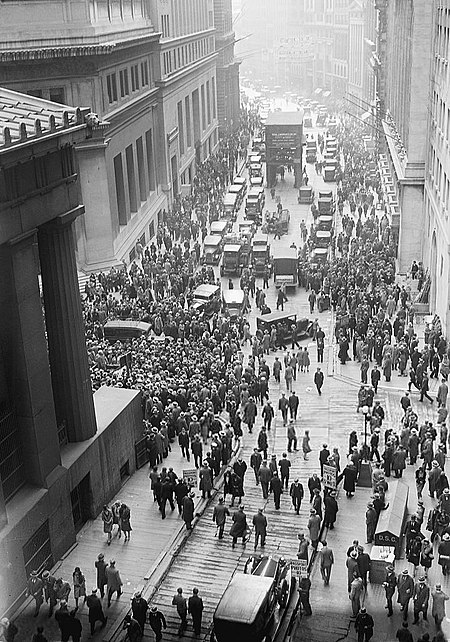Anussati
|
Read other articles:

British Army general For the rugby league player, see William Hargrave (rugby league). For the bishop of South Florida, see William L. Hargrave. William HargraveWilliam HargraveDied21 January 1751Allegiance Kingdom of Great BritainService/branchBritish ArmyRankLieutenant generalBattles/warsNine Years' WarWar of the Spanish SuccessionJacobite rising of 1715 Lieutenant General William Hargrave (died 21 January 1751) was a British Army officer and Governor of Gibraltar. Military career Hargrav…

Thanatephorus cucumeris (teleomorf)Rhizoctonia solani (anamorf) Hifa R. solani menunjukan penyudutan ke kanan yang khas Klasifikasi ilmiah Kerajaan: Fungi Divisi: Basidiomycota Kelas: Agaricomycetes Ordo: Cantharellales Famili: Ceratobasidiaceae Genus: Thanatephorus Spesies: T. cucumeris Nama binomial Thanatephorus cucumeris(A.B. Frank) Donk 1956 Sinonim Corticium sasakii (Shirai) H. Matsumoto 1934 Corticium solani (Prill. & Delacr.) Bourdot & Galzin 1911 Corticium vagum var. solani…

ąÉąĘąĖą░čéčüą║ąĖą╣ ą▒ą░čĆčüčāą║ ąØą░čāčćąĮą░čÅ ą║ą╗ą░čüčüąĖčäąĖą║ą░čåąĖčÅ ąöąŠą╝ąĄąĮ:ąŁčāą║ą░čĆąĖąŠčéčŗą”ą░čĆčüčéą▓ąŠ:ą¢ąĖą▓ąŠčéąĮčŗąĄą¤ąŠą┤čåą░čĆčüčéą▓ąŠ:ąŁčāą╝ąĄčéą░ąĘąŠąĖąæąĄąĘ čĆą░ąĮą│ą░:ąöą▓čāčüč鹊čĆąŠąĮąĮąĄ-čüąĖą╝ą╝ąĄčéčĆąĖčćąĮčŗąĄąæąĄąĘ čĆą░ąĮą│ą░:ąÆč鹊čĆąĖčćąĮąŠčĆąŠčéčŗąĄąóąĖą┐:ąźąŠčĆą┤ąŠą▓čŗąĄą¤ąŠą┤čéąĖą┐:ą¤ąŠąĘą▓ąŠąĮąŠčćąĮčŗąĄąśąĮčäčĆą░čéąĖą┐:ą¦ąĄą╗čÄčüčéąĮąŠčĆąŠčéčŗąĄąØą░ą┤ą║ą╗ą░čüčü:ą¦ąĄčéą▓ąĄčĆąŠąĮąŠą│ąĖąĄąÜą╗ą░ą┤ą░:ąÉą╝ąĮąĖąŠčéčŗąÜą╗ą░ą┤ą░:ąĪąĖąĮą░ą┐čüąĖą┤čŗąÜą╗ą░čüčü:ą£ą╗ąĄą║ąŠą…

This article is about the 2006 Lionel Richie compilation album. For the 2008 Gold (Commodores album), see Commodores discography. 2006 compilation album by Lionel Richie & CommodoresGoldCompilation album by Lionel Richie & CommodoresReleasedJanuary 10, 2006GenreR&B, pop, rockLength2:38:34LabelHip-O Records, Motown Records, Universal RecordsProducerJames Anthony Carmichael, Commodores, Lionel Richie, David Foster, Narada Michael Walden, Jimmy Jam and Terry LewisLionel Richie c…

Amphitheater at Stanford University, Stanford, California Graham Nash of Crosby, Stills, Nash & Young at the Amphitheater in 1976 The Laurence Frost Amphitheater, commonly known as Frost Amphitheater, is a prominent amphitheater at Stanford University. It first opened in 1937 and was the site of commencement ceremonies for the university from 1938 until 1984.[1] It can hold about 8,000 people.[2] History The amphitheater built in 1937 was a gift of Mr. and Mrs. Howard Frost i…

Un tappeto da preghiera islamico tipo Bellini, visto dall'alto, ai piedi della Vergine Maria, nel dipinto di Gentile Bellini, Madonna e Bambino in trono, tardo XV secolo.Tappeto da preghiera, Anatolia, tardo XV secolo-inizi XVI secolo, con motivo rientrante ad asola. Hans Memling, Natura morta con un vaso di fiori, tardo XV secolo.Tappeto Karabakh (scuola Karabakh school),[1][2] tardo XIV secolo-inizio XV secolo, Museo azerbaigiano dei tappeti.[1] I tappeti orientali nei …

Ńā©ŃāÅŃāŹŃé╣12õĖ¢ ń¼¼130õ╗Ż ŃāŁŃā╝Ńā×µĢÖńÜć µĢÖńÜćÕ░▒õ╗╗ 955Õ╣┤12µ£ł16µŚźµĢÖńÜćķøóõ╗╗ 964Õ╣┤5µ£ł14µŚźÕģłõ╗Ż ŃéóŃé¼ŃāÜŃāłŃéźŃé╣2õĖ¢µ¼Īõ╗Ż Ńā¼Ńé¬8õĖ¢ÕĆŗõ║║µāģÕĀ▒Õć║ńö¤ 937Õ╣┤Ńé╣ŃāØŃā¼Ńā╝ŃāłÕģ¼ÕøĮ’╝łõĖŁķā©ŃéżŃé┐Ńā¬Ńéó’╝ēŃé╣ŃāØŃā¼Ńā╝ŃāłµŁ╗ÕÄ╗ 964Õ╣┤5µ£ł14µŚź µĢÖńÜćķĀśŃĆüŃāŁŃā╝Ńā×ÕĤÕøĮń▒Ź Ńé╣ŃāØŃā¼Ńā╝ŃāłÕģ¼ÕøĮĶ”¬ ńłČŃéóŃā½ŃāÖŃā¬Ńā╝Ńé│2õĖ¢’╝łŃé╣ŃāØŃā¼Ńā╝ŃāłÕģ¼’╝ēŃĆüµ»ŹŃéóŃā½ŃāĆŃüØŃü«õ╗¢Ńü«Ńā©ŃāÅŃāŹŃé╣ŃāåŃā│ŃāŚŃā¼Ńā╝ŃāłŃéÆĶĪ©ńż║ Ńā©ŃāÅŃāŹŃé╣12õĖ¢’╝łIoannes XIIŃĆü937Õ╣┤ - 964Õ╣┤5µ£ł14µŚź’╝ēŃü»ŃĆüŃāŁŃā╝…

1943 Saint-Donat Liberator III crashAccidentDate20 October 1943 (1943-10-20)SummaryCFIT (controlled flight into terrain)SiteSaint-Donat, Lanaudi├©re, Quebec, Canada46┬░15ŌĆ▓03ŌĆ│N 74┬░17ŌĆ▓48.3ŌĆ│W / 46.25083┬░N 74.296750┬░W / 46.25083; -74.296750Aircraft typeConsolidated Liberator IIIAircraft nameHarryOperatorRoyal Canadian Air Force No. 10 Squadron RCAFRegistration3701HFlight originGander International AirportDestinationMont-Joli Airport, Qu├®be…

German literary award AwardGeorg B├╝chner PrizePortrait of Georg B├╝chner, pencil drawing by the Darmstadt theater painter Philipp August Joseph HoffmannAwarded forauthors writing in the German language whose work is considered especially meritorious and who have made a significant contribution to contemporary German cultureLocationDarmstadtCountryGermanyPresented byDeutsche Akademie f├╝r Sprache und DichtungReward(s)Ōé¼50,000First awarded1923Websitewww.deutscheakademie.de/en/awards/georg-buechn…

Untuk untuk klub Liga Utama Rusia lainnya dari Krasnodar, lihat FC Kuban Krasnodar. Artikel ini bukan mengenai FC Krasnodar-2000. KrasnodarNama lengkapążčāčéą▒ąŠą╗čīąĮčŗą╣ ą║ą╗čāą▒ ąÜčĆą░čüąĮąŠą┤ą░čĆ(Klub Sepak Bola Krasnodar)JulukanByki (The Bulls), Hitam-HijauBerdiri22 Februari 2008; 16 tahun lalu (2008-Feb-22)StadionStadion Krasnodar, Krasnodar(Kapasitas: 33.000)PemilikSergey GalitskyKetuaSergey GalitskyManajerOleg KononovLigaLiga Utama Rusia2015ŌĆō16ke-3Situs webSitus web resmi klu…

This article needs additional citations for verification. Please help improve this article by adding citations to reliable sources. Unsourced material may be challenged and removed.Find sources: Rail yard ŌĆō news ┬Ę newspapers ┬Ę books ┬Ę scholar ┬Ę JSTOR (February 2022) (Learn how and when to remove this message) Enclosed area designated for railways A large Amtrak and Metra coach yard just south of Chicago Union Station. About 25 percent of all rail traffic …

2008 Washington Republican presidential caucuses and primary ← 2004 February 9, 2008 (2008-02-09) (caucus)February 19, 2008 (primary) 2012 → ← WIOH → Candidate John McCain Mike Huckabee Party Republican Republican Home state Arizona Arkansas Delegate count 16 8 Popular vote 3,228/262,304 2,959/127,657 Percentage 25.9%/49.50% 23.52%/24.09% Candidate Ron Paul Mitt Romney Party Republican Republican Home st…

Sudden widespread decline of stock prices Stock price graph illustrating the 2020 stock market crash, showing a sharp drop in stock price, followed by a recovery A stock market crash is a sudden dramatic decline of stock prices across a major cross-section of a stock market, resulting in a significant loss of paper wealth. Crashes are driven by panic selling and underlying economic factors. They often follow speculation and economic bubbles. A stock market crash is a social phenomenon where exte…

Japanese anime television series Vinland SagaKey visual of the seriesŃā┤ŃéŻŃā│Ńā®Ńā│ŃāēŃā╗ŃéĄŃé¼(Vinrando Saga)GenreAdventure[1]Epic[1]Historical[2] Anime television seriesDirected bySh┼½hei YabutaProduced byNaokado FujiwaraY┼Źko Ueda (S1)Mitsuhiro Sugita (S1)Hitoshi Matsumoto (S2)Masae Yamato (S2)Akira Yonezawa (S2)Written byHiroshi SekoKenta Ihara (S1)Music byYutaka YamadaStudioWit Studio (S1)MAPPA (S2)Licensed byNetflix[a] BI: MVM Enter…

Daftar ini mencantumkan hal-hal pertama yang dilakukan dari berbagai Wakil Presiden Indonesia. Daftar mencakup hal-hal pertama yang dilakukan dalam kehidupan mereka sebelum menjabat, saat menjabat dan setelah menjabat. Mohammad Hatta (1945ŌĆō1956) Informasi lebih lanjut: Mohammad Hatta Wakil Presiden pertama.[1] Wakil Presiden pertama yang beretnis Minangkabau.[2] Wakil Presiden pertama yang mengundurkan diri. G.R.M.Henkie Dorodjatun / Sri Sultan Hamengku Buwono IX (1973ŌĆō1978) …

American architect C. Emlen UrbanThe Hager Building in downtown LancasterBornFebruary 26, 1863Conestoga Township, Lancaster County, PennsylvaniaDiedMay 21, 1939Lancaster, PennsylvaniaNationalityAmericanOccupationArchitect Cassius Emlen Urban (February 26, 1863 ŌĆō May 21, 1939) was a Lancaster, Pennsylvania-based architect. He was the leading architect in Lancaster from the 1890s to the 1920s. Biography He was born on February 26, 1863, to Barbara Hebble and Amos S. Urban in Conestoga Township, …

51┬░23ŌĆ▓42ŌĆ│N 0┬░32ŌĆ▓28ŌĆ│W / 51.395┬░N 0.541┬░W / 51.395; -0.541 Borough and non-metropolitan district in EnglandBorough of RunnymedeBorough and non-metropolitan districtRunnymede Bridge, carrying the A30 and M25 over the River Thames near Egham Coat of armsMotto: In Freedom We ServeRunnymede shown within SurreySovereign stateUnited KingdomConstituent countryEnglandRegionSouth East EnglandNon-metropolitan countySurreyStatusNon-metropolitan districtAdmin HQAddlest…

Alex of VeniceSutradaraChris MessinaProduserSamantha Housman Jamie Patricof Lynette Howell Louise RungeDitulis olehJessica Goldberg Katie Nehra Justin Shilton Chris Messina (uncredited)PemeranMary Elizabeth Winstead Don Johnson Katie Nehra Chris MessinaPenata musikDavid WingoSinematograferDoug EmmettPenyuntingAmy P. McGrathPerusahaanproduksiElectric City EntertainmentDistributorScreen Media FilmsTanggal rilis 18 April 2014 (2014-04-18) (Tribeca Film Festival) 17 April 2015 (2…

2nd Critics' Choice Television AwardsDateJune 18, 2012 (2012-06-18)LocationThe Beverly Hilton, Los AngelesCountryUnited StatesPresented byBroadcast Television Journalists AssociationHighlightsMost awardsBreaking BadHomelandModern FamilyParks and RecreationSherlock (2)Most nominationsCommunity (6)Best Comedy SeriesCommunityBest Drama SeriesHomelandWebsitewww.criticschoice.com ← 1st ┬Ę Critics' Choice Television Awards ┬Ę 3rd → The 2nd Critics' Choice…

Disambiguazione ŌĆō Se stai cercando altri significati, vedi KDE (disambigua). KDE Tipocomunit├Ā di software libero Affiliazione internazionale KDE e.V.. Fondazione12 luglio 1998 FondatoreMatthias Ettrich Sito web Modifica dati su Wikidata ┬Ę Manuale KDE ├© una comunit├Ā internazionale la cui attivit├Ā principale ├© lo sviluppo di Software Libero.[1] Originariamente con KDE si denominava un ambiente desktop (K Desktop Environment), successivamente esso ├© stato chiamato KDE …

